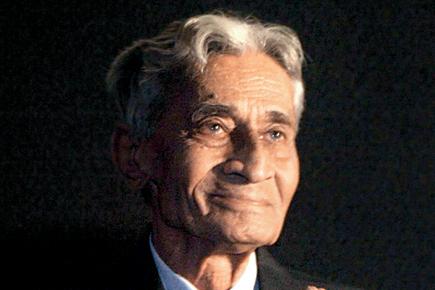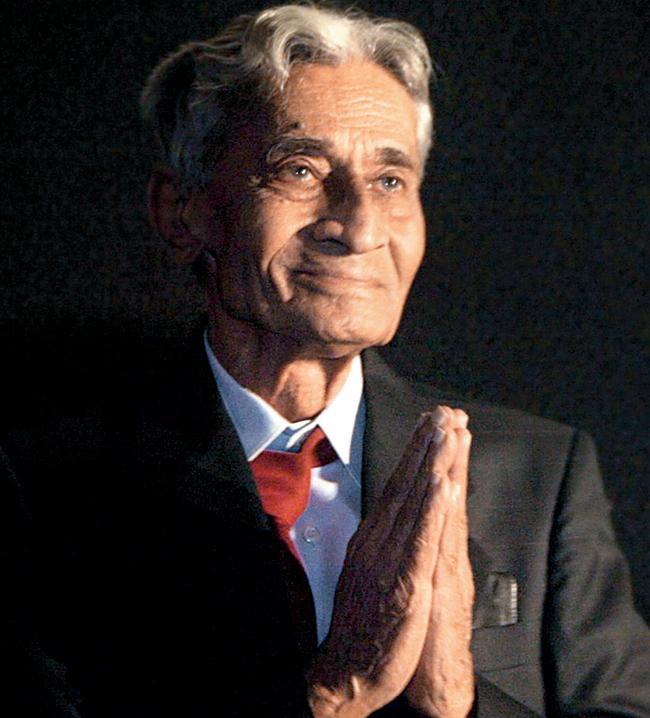Legendary cinematographer VK Murthy passed away earlier this month. In what was possibly his last interview, he spoke about his association with Guru Dutt and the role of cinematography in creating magic on screen

The one-storeyed bungalow in Bangalore’s Jaya Nagar, was hard to find, especially for an outsider, but the patient voice on the phone gave me precise directions. VK Murthy, renowned cinematographer, was surprised that someone wanted to meet him. “I am retired now,” he said with a smile as we settled on his verandah sipping piping hot kaapi.
ADVERTISEMENT

As the names of VK Murthy and Guru Dutt are inseparable in the history of Indian cinema, it was not surprising that once the thespian started talking, Guru Dutt occupied his thoughts and his words. “Guru Dutt was one year younger to me so I called him tum. Our relationship was such that there was no question of calling him ‘Aap.’ I was an assistant cameraman for the film Baazi and V. Ratra was the cinematographer. Dutt was very interested in the technical side of films.
During the shooting, he wanted a shot, which Ratra said could not be done. I suggested how it could be done and the shot was completed successfully. Guru Dutt then asked me if I would like to work on his next film,” he recalled. That offer started a partnership, which lasted for all of Dutt's subsequent films including masterpieces such as Pyaasa, Kagaz ke Phool and Sahib Biwi Aur Ghulam, till Dutt's death in 1964. “We collaborated on all films. We were both technically inclined and spent hours discussing shots, and different ways of lighting. We fought too because we both were passionate about work,” he added.
Murthy was the first film technician to be honoured with the Dadasaheb Phalke award in 2008. He attributed it to the work he did with Guru Dutt, “I had freedom to use my creativity. Most cameramen do as told. I could place the cameras where I wanted, move them at angles I wanted, and experiment with lights.”
Partners in arms
How was it working with another legend, in an era when Hindi films certainly did not make even a fraction of the money they make now? Murthy said, “Kaagaz ke Phool did not recover even 50 per cent of its cost. He was upset and said nothing for days. Then he made Chaudhavin Ka Chand to make up the losses.” That film too did not make money but who can forget the iconic shot in the song Waqt Ne Kiya Kya Hansi Sitam, where a single beam of light streams through an abandoned studio as Guru Dutt and Waheeda Rehman sing their legendary number.
On his most famous shot, Murthy said, “It was in Mehboob studios. Guru Dutt and I were relaxing after lunch one day and saw a beautiful ray of light enter the studio through a port-hole. Dutt turned to me and said, ‘Murthy woh karo na’. I was perplexed and started thinking. The following day I had my Eureka moment when I saw sunlight falling on a make-up man’s mirror. I immediately asked for a big make-up mirror, placed it in the path of the sunbeam and reflected the rays on to another mirror placed on the studio terrace. The mirror on the terrace then threw the beam on the studio floor and we had our single beam of light,” explained Murthy, the triumph in his voice unmistakable. “Dwarka Diwecha (cinematographer of Sholay) used to work at Mehboob that time. He was watching me playing with these mirrors and asked me, “Kya kar raha hai tu.” When I showed him the beam of light, Diwecha said, “Tum Madrasi logon ka brain chalta hai,” Murthy chuckled.
Shadow lines
Following more cups of kaapi, he opened up further. “We used to play the songs while setting up the camera. This way we could make best use of the shadows and make it all look as natural as possible even though we were shooting with artificial lights inside a studio,” he recalled. “Shadows were important as they created shapes and gave a dimension to the shot. Without a shadow, a light has no personality,” said the man who named even his daughter Chhaya, which means shadow.
As the evening cast shadows on his garden, Murthy looked tired so I got up to leave, but not before touching the feet of genius who created magic with light. A genius, whose death on April 7 at the age of 91 has brought to an end a glorious era in the annals of Hindi films.
 Subscribe today by clicking the link and stay updated with the latest news!" Click here!
Subscribe today by clicking the link and stay updated with the latest news!" Click here!






